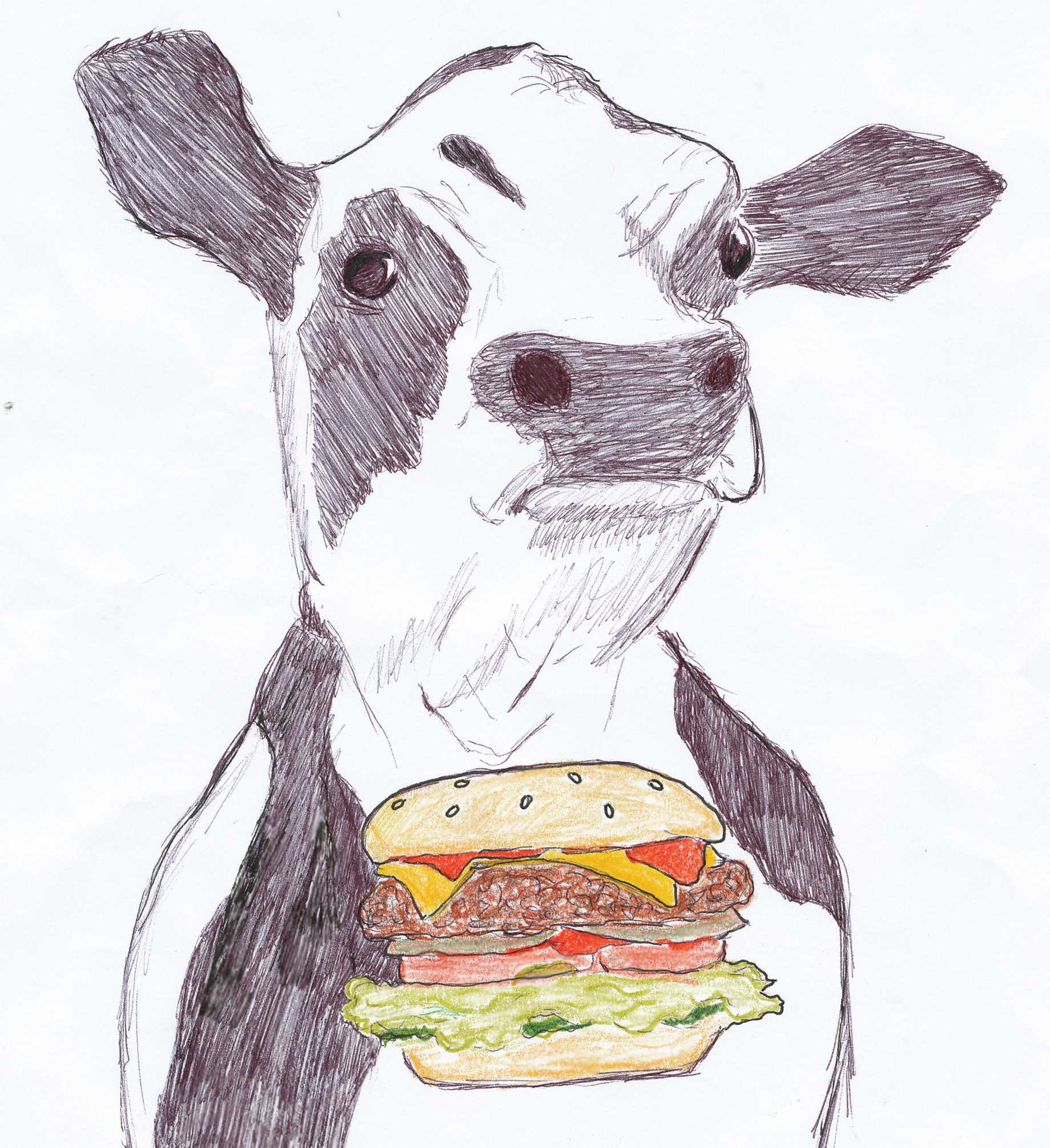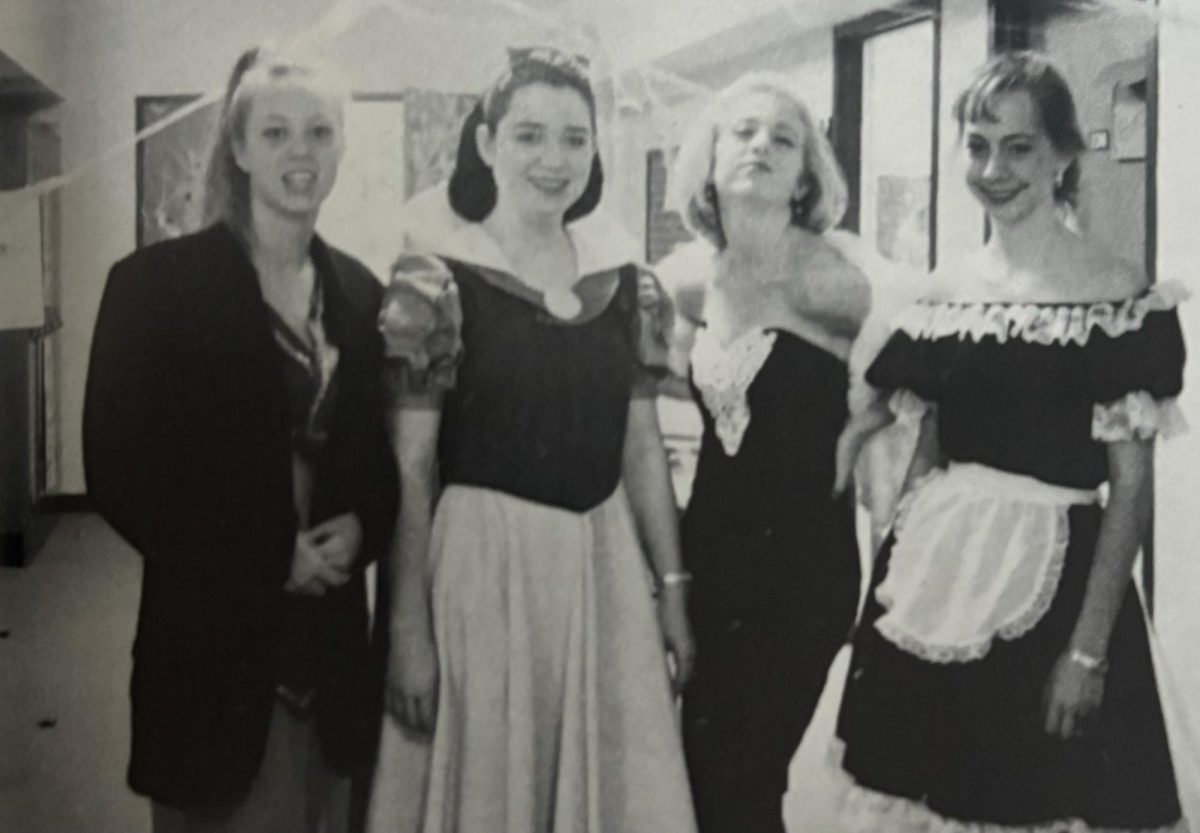Sophomore Annabel looks at the gap between food production and food consumption.
There is one thing in the life of every human being that dominates each day, one thing that relentlessly beckons, one thing that, time after time, stalks us down when we least expect it. That thing is hunger.
The human relationship with food is one of constant struggle and nagging attachment.
In the early ages of man, we had to fight for our food. We saw it living, we saw it suffer, we saw it die.
Or, in the case of vegetables, a meal signified the culmination of long hours of scrupulous scavenging. Either way, food was a privilege, attained through hard work and patience.
Now, many of us cannot escape its ever-present temptation. About the same time as food started to accumulate in copious supply, we began to lose our connection to its origins.
The closest most of us ever get to seeing our food in living, breathing form is a brief encounter through the glass of the car window as we drive by the beef farm. Even this feels strange and foreign. In such an environment, there is little reason for a child to believe their dinner comes from anywhere but the plastic packages on the shelves of the grocery store.
However, it appears people are beginning to recognize this disparity and, as a result, many have attempted to close the gap between “eater” and “eaten.” Thanks to the recent “green” revolution, a considerable mass of modern society (we call them hipsters) has sought a return to its roots by planting backyard vegetable gardens or housing chickens in portable, backyard coops. Where this is not a possibility, many people are now shopping for the healthier, “all-natural” alternatives.
Unfortunately, due to higher prices on natural foods and to the large monetary investment necessary to kick-start a personal backyard “green food factory,” this trend is typically limited to the wealthier members of society.
Spreading this mentality to society at large proves a difficult task. The answer may lie, as usual, in education. By simply educating children of all backgrounds on the origins of their food, we could potentially increase activism on the part of abused livestock, reduce waste, save resources and cut down on greenhouse gas emissions.
Our detachment is an entirely new development for human society. We have become desensitized to the entire process of food production and consumption and, for this reason, we often fail to realize the consequences of our own constant food intake.
It is no wonder that obesity has become such a widespread crisis. What is one more chicken nugget when it no longer represents a piece of an animal, but a mere investment of ten cents?
It is also unsurprising that we have become such a wasteful society. After eating, even after overeating, there is always more food than we can possibly consume. This abundance only encourages the common habit of mindless eating (that is, eating without considering the origins of the food or one’s level of hunger).
In other words, if you have never seen the cow that became the hamburger on your plate, you will likely have a much easier time tossing that hamburger into a trashcan, whereas, after seeing the cow, you might not even order the hamburger in the first place.
In addition, excess food production takes a heavy toll on the environment, as, with each cow, we use up valuable resources such as fossil fuels, water and land. The methane emitted by livestock has been proven time and time again to be a major contributor to the greenhouse effect and, furthermore, the factories and equipment used to process and package our food play a key role in polluting the atmosphere.
As a consequence of this process, meat has stooped below vegetables in price per portion, which proves the cost of upkeep for vegetables has exceeded that of meat-producing animals. Not only does this disparity indicate the need for a severe concern on the treatment of livestock, but it also corresponds to an increasing obesity rate, in America (the beef capital of the world). This is unfortunate, as meat production claims a much greater negative impact on the environment—and the nation’s waistline—than vegetable production does.
Awareness is certainly a good first step in America’s recovery process, but until prices on healthy foods fall below those on less healthy options and marketing of healthy foods replaces that of fast food, we will likely not see an end to the consequences of our unhealthy eating.
– Annabel





